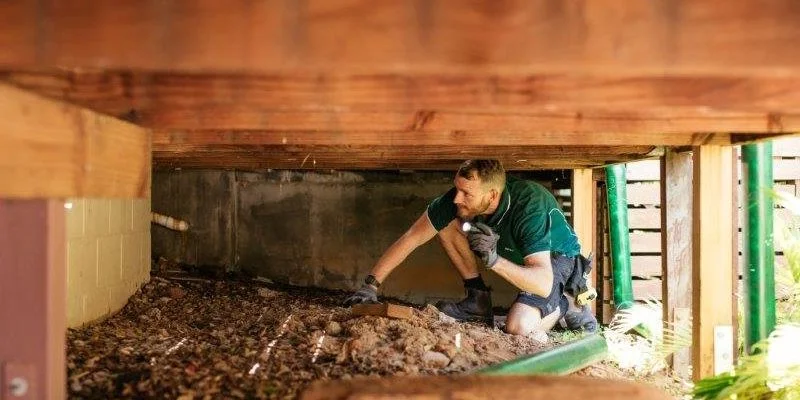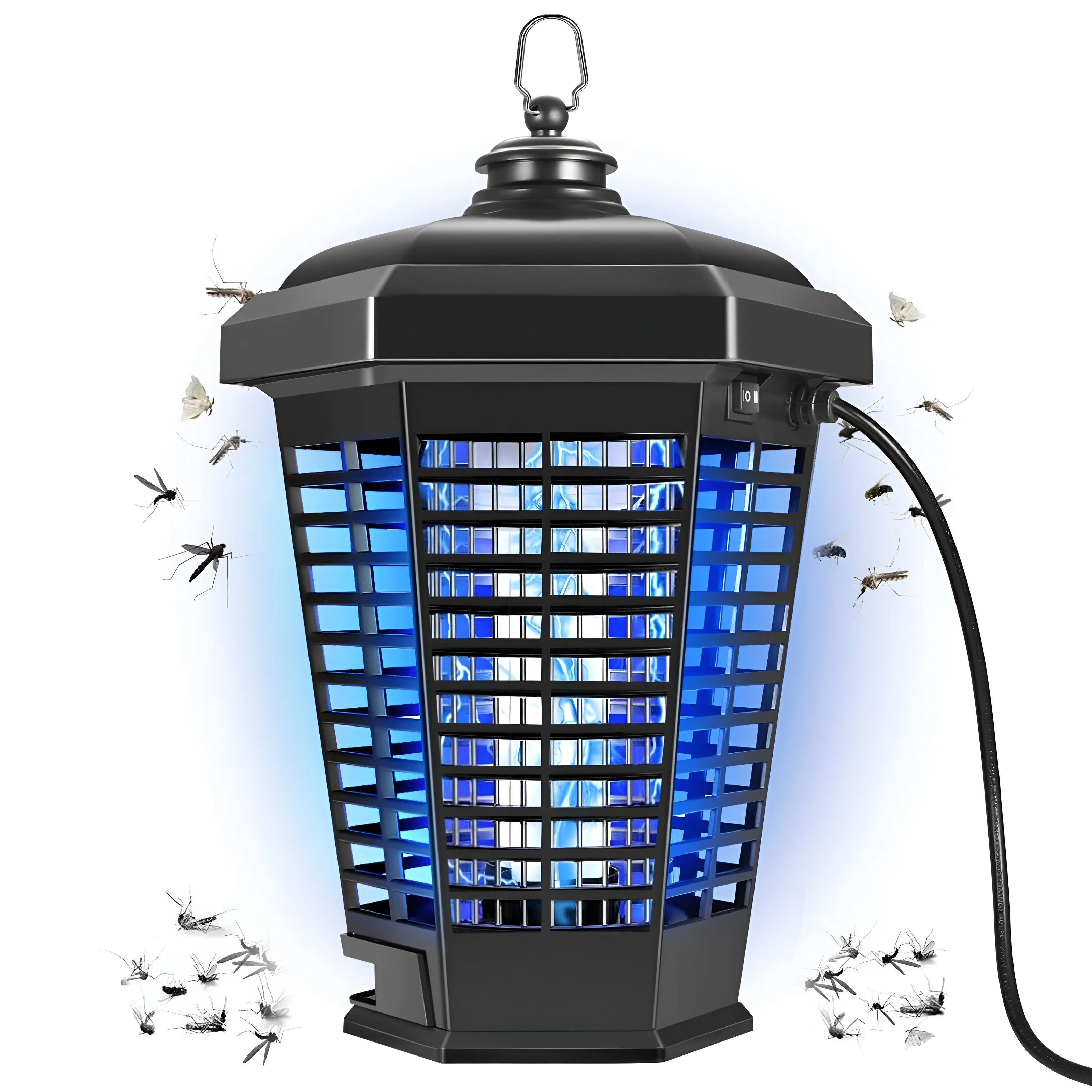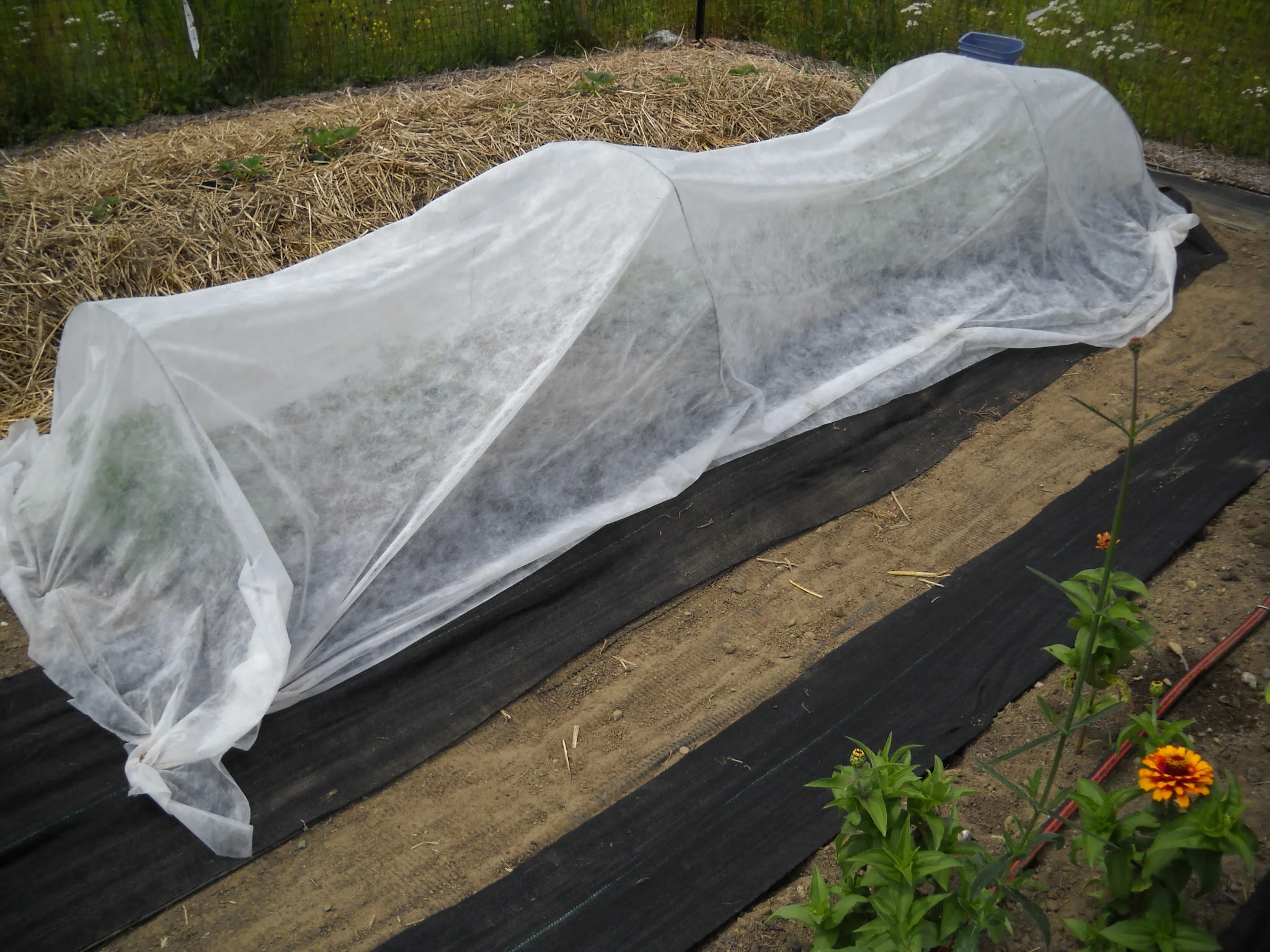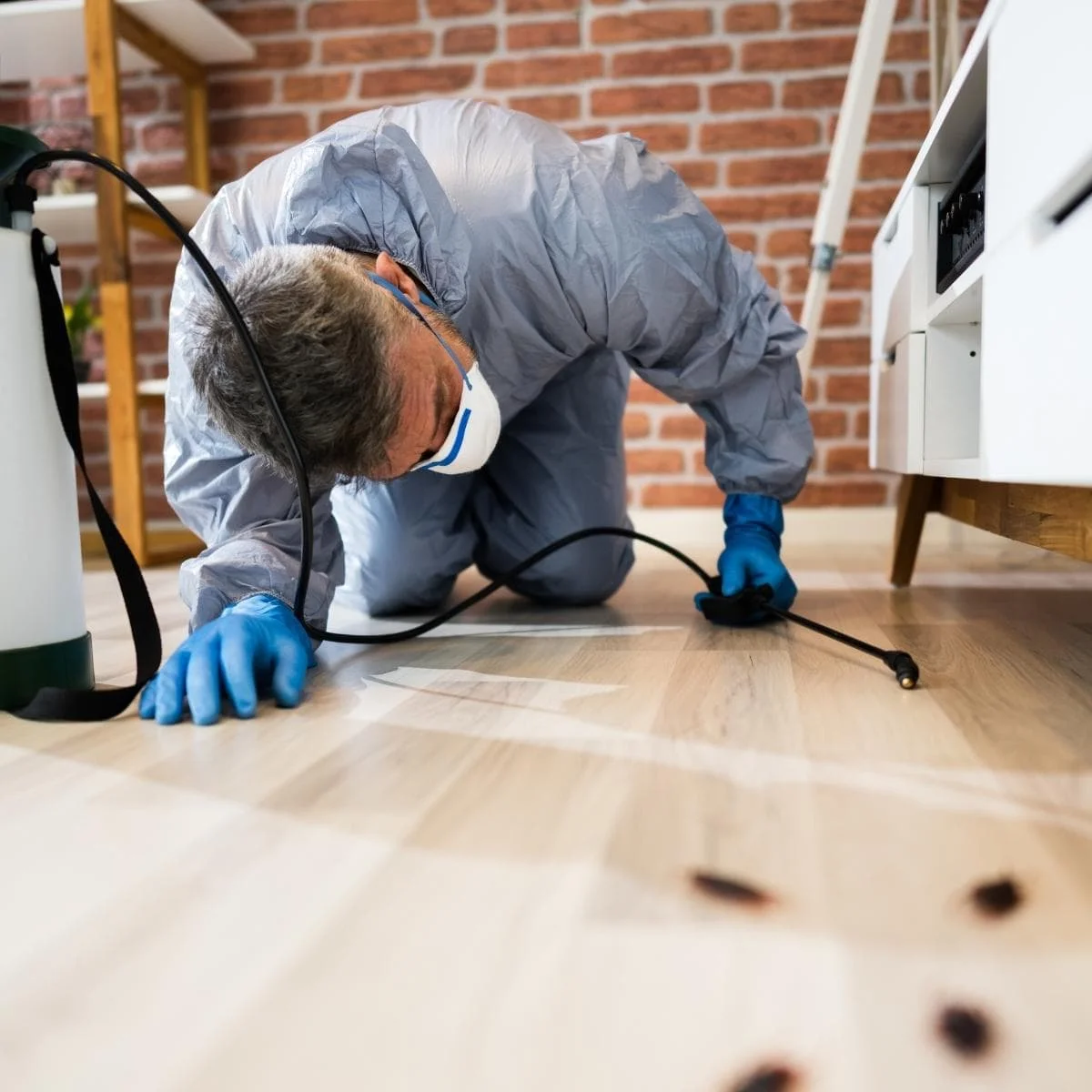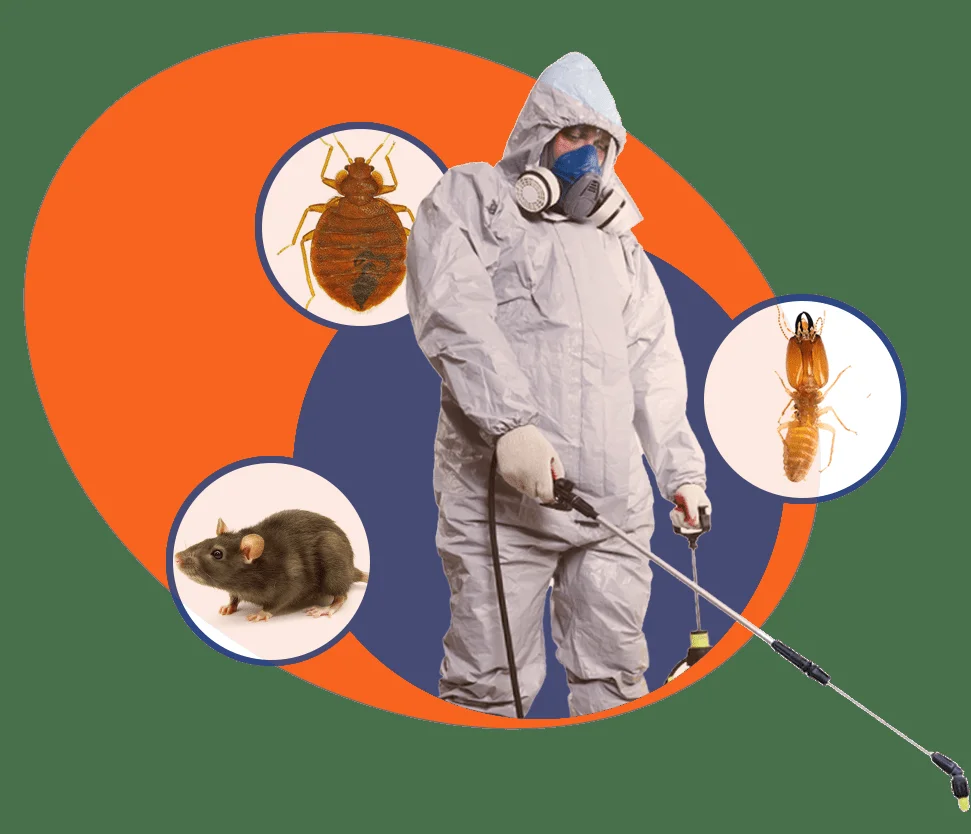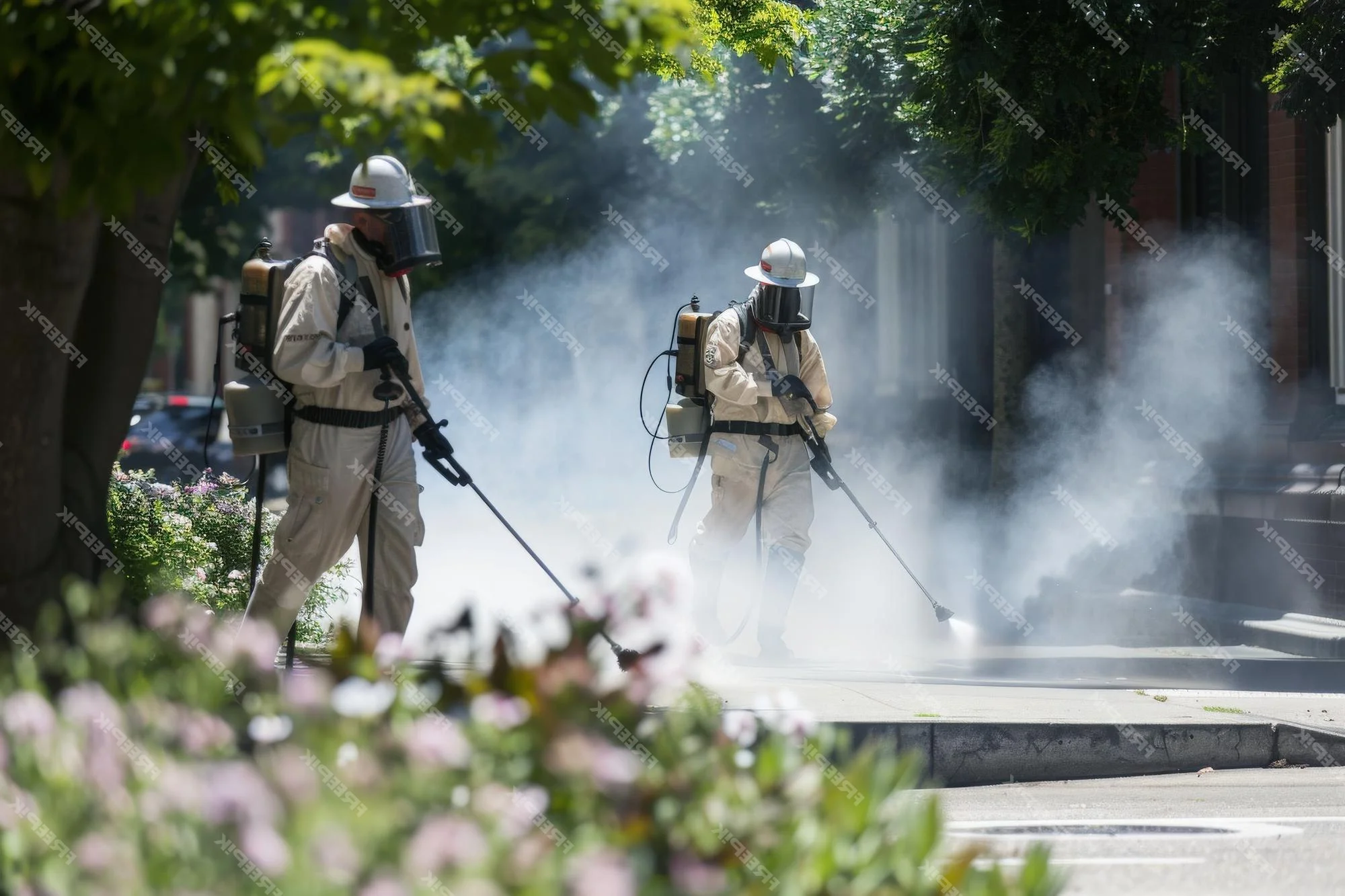From the Appalachian Mountains in the east to the Mississippi River plains in the west, Kentucky presents diverse pest environments shaped by the state's unique geography, abundant waterways, and varied climate zones. The Bluegrass State's four-season climate—characterized by humid summers, mild winters, and substantial annual rainfall—creates ideal conditions for numerous pest species to thrive year-round. Effective pest control in Kentucky requires specialized knowledge of these regional ecosystems, architectural considerations, and targeted approaches that address both urban and rural pest pressures.
Properties throughout Kentucky face ongoing pest challenges that can damage structures, affect health, threaten the state's renowned agricultural sectors, and diminish quality of life. Whether addressing termite issues in historic homes, managing ticks in woodland properties, or controlling moisture-loving pests in river communities, local professional exterminators provide essential expertise tailored to Kentucky's specific conditions. This guide explores common Bluegrass State pest problems, effective management strategies including eco-friendly pest solutions, and why Kentucky's distinctive environmental factors make professional knowledge particularly valuable for lasting protection.
Dealing with persistent Kentucky pests? Our Bluegrass State specialists offer
emergency pest control
24/7 and comprehensive
property inspections throughout Kentucky.
Contact us today for prompt assistance!
Pest Control Challenges Specific to Kentucky
Kentucky's unique environment creates distinctive pest control challenges that require specialized approaches. Here's why pest management in the Bluegrass State demands expert attention:
-
Geographic diversity Kentucky spans from the Appalachian Mountains in the east to the Mississippi River plains in the west, creating dramatically different ecosystems within the state. This geographic diversity supports varied pest populations and behaviors requiring region-specific control strategies for eastern mountain areas, central bluegrass regions, and western river counties.
-
Abundant waterways The state features over 90,000 miles of streams and rivers, including the Ohio, Tennessee, Cumberland, and Mississippi Rivers, plus numerous lakes and wetlands. These extensive water features create moisture-rich environments supporting mosquito breeding, fostering termite activity, and attracting water-seeking pests throughout Kentucky's humid climate.
-
Historic architecture Kentucky's wealth of historic properties—from bourbon distilleries and horse farms to century-old homes in established communities—presents unique pest vulnerabilities due to aging materials, traditional construction methods, and preservation requirements that sometimes limit treatment options. These historic structures often require specialized inspection techniques and customized treatment approaches.
-
Agricultural influence The state's diverse agricultural sectors—including horse farms, tobacco fields, corn production, and bourbon distilleries—influence pest dynamics even in residential areas. Seasonal farming activities can displace field pests toward structures, while specialty agricultural operations create unique pest management needs related to their specific products and processes.
-
Woodland-urban interfaces Kentucky's abundant forests and expanding urban/suburban communities create extensive boundaries where developed areas meet natural habitats. These transition zones experience unique pest pressures as woodland species like ticks, mosquitoes, and various wildlife pests readily move between natural areas and residential properties, particularly in growing communities near forest edges.
Understanding these Kentucky-specific challenges is crucial for effective pest management. Professional pest control services develop customized treatment plans that address these regional factors, providing targeted protection for the Bluegrass State's distinctive environmental conditions.
Common Pests in Kentucky
Kentucky's varied landscapes and four-season climate support numerous pest species that impact properties differently based on location, season, and surrounding environment. Here are the most common invaders that plague the Bluegrass State:
Termites
Professional termite inspection being conducted on a Kentucky property
Eastern subterranean termites pose a major threat to Kentucky properties, causing millions in structural damage annually. The Bluegrass State falls entirely within the heavy termite pressure zone, with activity particularly intense due to the state's substantial annual rainfall, high humidity levels, and relatively mild winters that allow for extended termite foraging seasons compared to northern states.
Professional termite inspection and treatment combines thorough structural evaluation, soil treatment barriers, targeted colony elimination, and ongoing monitoring systems. For Kentucky's many historic homes, specialized inspection techniques identify hidden termite activity in period-specific construction elements, while preventative treatments provide long-term protection. Spring termite swarms, typically occurring from March through May as temperatures consistently warm, signal peak reproductive activity and heightened risk for new colony establishment.
Mosquitoes
Mosquito treatment being applied in a Kentucky residential yard
Kentucky's abundant waterways, substantial annual rainfall, and humid climate create ideal breeding conditions for numerous mosquito species. These biting pests emerge as temperatures consistently exceed 50°F in spring and remain active until fall frost, with peak activity during July and August when humidity levels are highest. Beyond the significant nuisance they create for outdoor activities, Kentucky mosquitoes can transmit West Nile virus and other diseases.
Effective mosquito control combines environmental management to eliminate standing water, targeted larvicide treatments for permanent water features, and strategic adult mosquito treatments around landscape features and outdoor living spaces. Professional services create customized treatment schedules matching Kentucky's specific regional mosquito patterns, allowing families to reclaim outdoor enjoyment during warm months when mosquito activity would otherwise restrict outside activities.
Ticks
Professional application of tick control treatment at a Kentucky property edge
Kentucky's extensive forests, abundant wildlife, and outdoor-focused lifestyle create significant tick pressure throughout the state. Common species include the American dog tick, lone star tick, and blacklegged (deer) tick, which can transmit diseases including Lyme disease, Rocky Mountain spotted fever, and ehrlichiosis. Properties near wooded areas or with substantial landscape features face increased tick activity, particularly during warm months.
Professional tick control focuses on treating landscape areas where humans and pets are most likely to encounter these arachnids. Effective strategies include targeted perimeter applications, landscape modification to reduce tick harborage areas, and wildlife deterrents to limit the presence of animals that transport ticks onto properties. For Kentucky's many homes bordering woodland areas, comprehensive tick management protects both outdoor spaces and family health during the extended tick season.
Rodents
Kentucky properties contend with several rodent species, with house mice and Norway rats common in urban areas, while deer mice and field mice more frequently affect rural properties. Rodent activity intensifies during fall and winter as cooling temperatures drive these pests indoors seeking warmth and shelter, with invasion pressure particularly strong after harvest activities displace field populations from agricultural operations.
Comprehensive rodent control begins with thorough inspection to identify entry points, harborage areas, and activity patterns. Professional management combines exclusion work to seal potential access routes, targeted trapping systems, protected baiting methods where appropriate, and ongoing monitoring to prevent reinfestation. For Kentucky's rural properties, specialized perimeter protection strategies address the heightened pressure from field rodents during seasonal transitions, while historic properties often require customized approaches that protect architectural features while still effectively addressing rodent issues.
Brown Recluse Spiders
Inspection for brown recluse activity in a Kentucky residence
Kentucky falls within the natural range of brown recluse spiders, with these medically significant arachnids establishing populations in undisturbed areas of homes and outbuildings. Unlike common house spiders, brown recluse spiders present health concerns due to their potentially harmful bites, making proper identification and management important for affected properties.
Professional spider control for brown recluse requires specialized inspection methods focusing on likely harborage areas including attics, crawlspaces, closets, storage areas, and outbuildings. Effective management combines targeted treatments of activity zones, regular web removal, dust applications in void areas where spiders hide, and careful inspection of stored items. Kentucky's abundance of outbuildings, barns, and older homes with numerous void spaces creates ideal habitat for these reclusive spiders, requiring comprehensive management strategies that address multiple potential harborage areas.
Eco-Friendly Pest Control for Kentucky Properties
Kentucky's treasured natural resources—from the Cumberland Falls to the state's renowned horse farms, bourbon distilleries, and extensive waterways—create strong demand for environmentally responsible pest management approaches. Modern eco-friendly pest solutions protect homes and businesses while minimizing environmental impact through targeted application methods, reduced-risk product selections, and integrated management strategies that address root causes rather than symptoms.
Professional services implement Integrated Pest Management (IPM) principles that prioritize inspection, exclusion, habitat modification, and biological controls when possible, reserving targeted chemical interventions as a last resort. This sustainable methodology particularly benefits families with young children, pet owners, properties near sensitive ecosystems, and Kentucky's many agricultural and equine operations where environmental stewardship is an essential consideration.
Environmental Commitment
Kentucky pest control specialists understand the importance of protecting the state's natural beauty and agricultural heritage, implementing management approaches that effectively address pest issues while respecting the Bluegrass State's environmental integrity.
Below is a comparison of different eco-friendly pest control methods highlighting their benefits for Kentucky properties:
| Treatment Method |
Benefits |
Ideal Use in Kentucky |
| Targeted Application Methods |
Places minimal product amounts only where pests travel, harbor, or enter structures, dramatically reducing overall chemical use while maintaining effectiveness.
|
Urban properties where minimizing chemical exposure is important, homes with children and pets, and properties near Kentucky's numerous waterways and conservation areas.
|
| Exclusion Techniques |
Creates physical barriers preventing pest entry without any chemical use, providing long-term protection with zero environmental impact or ongoing maintenance requirements.
|
Rodent prevention in both urban and rural properties, protecting historic structures against pest invasion, and securing homes against wildlife intrusions—particularly valuable for Kentucky's woodland interface properties.
|
| Habitat Modification |
Alters environmental conditions that attract and support pest populations through landscape changes, moisture management, and sanitation improvements rather than chemical interventions.
|
Mosquito reduction through water management, tick prevention through landscape adjustments, and termite deterrence through moisture control—especially important in Kentucky's humid climate.
|
| Equine-Safe Approaches |
Employs techniques and products designed for safe use around sensitive livestock operations, particularly Kentucky's valuable horse farms and breeding facilities.
|
Equine properties, agricultural operations, and homes with livestock or pets where specialized low-impact treatments protect both animals and pest management needs.
|
| Reduced-Risk Products |
Utilizes newer generation pesticides and botanical-based solutions designed specifically for lower environmental impact with faster environmental breakdown.
|
Properties near Kentucky's rivers and lakes, homes with organic gardens, bourbon distilleries with specific production requirements, and agricultural interfaces where environmental sensitivity is essential.
|
Residential & Commercial Pest Control Throughout Kentucky
Residential Pest Protection
Kentucky homes face varied pest challenges influenced by location, architectural style, and surrounding environment. Residential pest protection programs are tailored to address the specific needs of different Kentucky properties, from urban Louisville neighborhoods to historic Lexington homes, rural farm properties, and mountain cabins in eastern counties.
Professional services offer customizable protection plans against Kentucky's most common household pests, with particular emphasis on preventing termite damage, controlling moisture-loving pests, managing woodland invaders like ticks, and maintaining comfortable living spaces free from nuisance and health-threatening pests. Treatment schedules align with Kentucky's distinct seasonal patterns, with increased attention during critical transition periods when pest pressure intensifies due to changing weather conditions.
Commercial Pest Control
From restaurants in Louisville to healthcare facilities in Lexington, bourbon distilleries throughout the state, equine operations in central counties, and manufacturing facilities in both rural and urban areas, Kentucky businesses require specialized pest management programs that protect operations, reputation, and regulatory compliance. Commercial pest control services address distinct industry challenges with targeted protocols designed for each business category.
Professional commercial services provide comprehensive documentation supporting audit requirements, discreet service scheduling that minimizes operational disruption, and emergency response capabilities for time-sensitive situations. Kentucky's specialty industries—particularly bourbon production, horse farms, and tourism-related businesses—benefit from customized programs designed to maintain the highest standards while addressing the unique challenges these distinctive Kentucky operations face.
From residential pest protection plans to customized
commercial pest control solutions, we have properties throughout Kentucky covered –
schedule your service now and keep your
property pest-free year-round!
Why Choose Local Experts in Kentucky?
When it comes to protecting your Kentucky property from pests, working with local experts offers distinct advantages. A local pest control company understands the region's specific challenges and truly cares about the communities they serve. Here's why choosing local Kentucky specialists makes a significant difference:
-
Knowledge of regional pest patterns Local technicians understand how Kentucky's diverse regions—from the Appalachian east to the Mississippi River west—experience different pest pressures and seasonal cycles. This regional expertise allows for precisely targeted treatments and timing based on local experience rather than generic approaches used by national companies unfamiliar with Bluegrass State specifics.
-
Experience with Kentucky architecture Local experts are familiar with the distinctive construction methods found throughout the state, from historic limestone structures to traditional Kentucky farmhouses, equine facilities, and contemporary construction. This architectural knowledge helps identify vulnerable areas and implement effective protection strategies specifically suited to each property type.
-
Understanding of seasonal timing Kentucky's pronounced seasonal transitions create predictable pest activity windows that vary across the state. Local professionals know exactly when different seasonal pests become active in specific regions, allowing for precisely timed preventative treatments before problems develop, rather than reacting after infestations establish.
-
Familiarity with specialty industries Kentucky's unique business landscape includes bourbon distilleries, thoroughbred farms, tobacco operations, and tourism-focused historic sites—all with specific pest management requirements. Local experts understand these specialty industry needs and customize programs accordingly.
-
Community connection Local Kentucky companies live in the same communities they serve, creating accountability and long-term relationships built on trust. This local presence means faster response times for urgent issues, personalized service from technicians who know your property, and genuine investment in protecting Kentucky neighborhoods where they also live and work.
By choosing local professional exterminators with deep knowledge of Kentucky's specific pest challenges, property owners receive more effective, regionally-appropriate solutions than generic approaches used by those unfamiliar with the Bluegrass State's unique conditions.
Regional Pest Control Services Throughout Kentucky
Different regions of Kentucky face unique pest challenges based on geography, climate variations, and environmental features. Professional pest control specialists understand these regional differences:
Central Kentucky/Bluegrass Region
Including: Lexington, Frankfort, Georgetown, Versailles, Danville, Richmond
The heart of horse country combines fertile rolling hills, limestone-rich soil, and Kentucky's signature equine operations with historic communities and growing urban areas. The region's abundant pastureland creates distinct pest dynamics influenced by livestock operations, while historic properties in established communities face different challenges based on architectural features and age. Central Kentucky's karst topography with limestone caves and underground waterways affects moisture patterns and supports certain subterranean pest populations, while the region's signature horse farms require specialized pest management approaches that protect valuable animals while still addressing pest issues effectively.
Northern Kentucky/Louisville Metro
Including: Louisville, Covington, Florence, Elizabethtown, Bardstown, Shelbyville
The state's most densely populated region combines urban Louisville with surrounding suburban communities and Kentucky's noted bourbon distilleries. Urban areas contend with established pest populations in older neighborhoods, while the Ohio River corridor creates moisture conditions supporting mosquitoes and other moisture-dependent pests. The region's extensive park systems and green spaces provide habitat corridors for wildlife and various insect species that can affect nearby properties. Historic districts with century-old structures present unique pest vulnerabilities, while newer suburban developments often experience different pressures as construction disturbs existing pest habitats.
Eastern Kentucky/Appalachian Region
Including: Pikeville, Hazard, Ashland, Somerset, London, Corbin
Kentucky's mountainous eastern counties feature dramatically different terrain and pest challenges than western parts of the state. The region's substantial forest coverage, higher elevation, and increased annual rainfall create ideal conditions for moisture-loving pests including mosquitoes and wood-destroying insects. Tick populations thrive in these wooded environments, presenting higher disease transmission risk for residents and visitors enjoying outdoor activities. The area's traditional construction methods, including many cabins and homes built into hillsides, create unique pest vulnerabilities requiring specialized inspection and treatment approaches tailored to mountain properties.
Western Kentucky
Including: Bowling Green, Owensboro, Paducah, Hopkinsville, Henderson, Madisonville
The state's western region transitions from central Kentucky's rolling hills to flatter terrain approaching the Mississippi River, with distinctly different pest patterns. Agricultural operations dominate much of the landscape, influencing pest dynamics in both rural and urban settings. The region's major waterways—including the Ohio, Tennessee, and Mississippi Rivers—create moisture corridors supporting mosquito breeding and seasonal pest movements, while also affecting termite pressure in surrounding communities. Western Kentucky typically experiences slightly different seasonal timing than eastern counties, with spring pest emergence often beginning earlier and fall pest activity extending longer due to milder average temperatures and lower elevations.
Top Cities for Pest Control in Kentucky
Professional pest control services are available throughout the Bluegrass State. Below are some of the major Kentucky cities where quality pest management is especially important:
Louisville
As Kentucky's largest city, Louisville presents diverse pest management challenges across its varied neighborhoods and architectural styles. The city's position along the Ohio River creates moisture corridors that support mosquito breeding and termite populations, while the urban heat island effect can extend seasonal pest activity beyond what surrounding rural areas experience. Historic neighborhoods contend with mature trees, aging infrastructure, and complex structural systems that provide harborage opportunities for numerous pest species, while newer developments often disrupt existing pest habitats during construction. The city's extensive park system creates habitat corridors for wildlife and various insects that can affect nearby properties. Louisville's combination of river influence, historic architecture, and urban density requires comprehensive pest management strategies addressing both structural protection and exterior pest pressure.
Lexington
At the heart of Kentucky's Bluegrass Region, Lexington faces unique pest challenges influenced by its signature horse farms, historic districts, and growing urban footprint. The city and surrounding county feature limestone-rich soil that affects termite and ant activity, while the region's many equine operations create specific pest management requirements that protect valuable animals while addressing nuisance and health-threatening insects. Historic properties downtown and in established neighborhoods present different pest vulnerabilities based on architectural features and construction methods, often requiring specialized treatment approaches that preserve character while providing effective protection. Lexington's position within central Kentucky's rolling terrain, with numerous creeks and abundant green space, supports diverse pest populations influenced by both natural environments and urban development patterns.
Kentucky Service Coverage Map
Seasonal Pest Guide for Kentucky
Spring (March-May)
- Termite swarms emerge
- Tick activity increases substantially
- Ant colonies become active
- Mosquito breeding begins
Recommendation: Schedule annual termite inspection, implement preventative perimeter treatments as temperatures consistently rise, and begin tick control measures for outdoor living areas.
Summer (June-August)
- Mosquito activity reaches peak levels
- Tick populations at maximum activity
- Stinging insect colonies expand rapidly
- Brown recluse activity increases
Recommendation: Maintain regular mosquito treatments, monitor for wasp nest establishment, and implement comprehensive tick management for properties near wooded areas.
Fall (September-November)
- Rodents begin seeking indoor shelter
- Overwintering insects invade structures
- Spider activity increases inside homes
- Second tick activity surge before winter
Recommendation: Critical window for preventing rodent invasions, implementing exclusion work, and treating for overwintering insects before they enter structures.
Winter (December-February)
- Rodent activity concentrated indoors
- Occasional warm days activate overwintering insects
- Indoor spider issues continue
- Preparation for spring pest emergence
Recommendation: Focus on interior pest management addressing rodents, overwintering insects, and indoor spider activity during Kentucky's mild winter months.
Kentucky's seasonal patterns create predictable pest activity cycles, with each season presenting different challenges requiring specific preventative approaches. Professional pest control services adjust their strategies throughout the year to address these seasonal patterns, providing ongoing protection during critical transition periods when pest pressure intensifies due to changing weather conditions.
What Our Kentucky Clients Say
"After struggling with mosquitoes making our backyard unusable during summer months, their comprehensive treatment program has completely transformed our outdoor living experience in Louisville. We can finally enjoy our patio throughout the entire summer."
- Jennifer S., Louisville
★★★★★
"As managers of a thoroughbred farm in Lexington, we needed pest control that was effective yet safe for our valuable horses. Their specialized equine-friendly program provides complete protection while meeting our strict safety requirements for the stable areas."
- Robert & Sarah T., Lexington
★★★★★
"Owning a historic home in Bardstown means constant vigilance against termites and other wood-destroying pests. Their annual inspection program identified problem areas before any damage occurred, and their treatments have protected our property's historic features."
- Michael W., Bardstown
★★★★★
Frequently Asked Questions
How does Kentucky's high humidity and abundant waterways affect pest control strategies?
Kentucky's combination of substantial annual rainfall (45-50 inches average) and extensive waterway systems creates distinctive moisture-related pest challenges requiring specialized treatment approaches. This high-moisture environment supports larger termite populations with extended foraging seasons compared to drier states, necessitating more comprehensive barrier treatments and monitoring systems. The abundant water features also create ideal breeding conditions for mosquitoes, with standing water developing quickly after rainfall due to high humidity levels that slow evaporation, requiring more frequent larvicide applications and expanded treatment areas. Additionally, the state's moisture levels accelerate wood decay in structures, creating conditions attractive to carpenter ants, powder post beetles, and other wood-destroying organisms beyond termites. Kentucky's humidity also supports larger populations of moisture-dependent occasional invaders like millipedes, springtails, and earwigs that surge after heavy rain events. Our treatment programs account for these moisture-related factors through specialized product selections formulated for high-humidity effectiveness, expanded treatment zones around waterway-influenced properties, and comprehensive moisture management recommendations that address the underlying conditions supporting these pest populations.
What special considerations apply to pest control for Kentucky's equine properties?
Kentucky's world-renowned horse industry requires specialized pest management approaches that protect both valuable animals and the facilities that house them. Several key factors differentiate equine property pest control: First, product selection must prioritize formulations specifically tested and approved for use around sensitive livestock, with particular attention to safety margins far exceeding minimum requirements for these high-value animals. Second, treatment timing must work around training schedules, competition calendars, and breeding seasons that vary throughout the year, requiring highly flexible service planning. Third, comprehensive fly management becomes a primary focus beyond typical residential services, often incorporating specialized systems like automated misting, fly predator releases, and targeted manure management protocols. Fourth, tick control takes on heightened importance due to horses' extensive exposure in pasture environments and the specific equine diseases these pests can transmit. Fifth, rodent management requires specialized approaches using secured bait systems and mechanical traps designed specifically to eliminate risks of secondary exposure to horses through direct contact or feed contamination. Our equine property programs incorporate all these considerations through customized service plans developed in close consultation with farm managers and veterinarians, ensuring effective pest management that aligns with the operational requirements and safety standards of Kentucky's signature industry.
How should Kentucky homeowners address the state's significant tick pressure?
Kentucky's abundant forests, wildlife populations, and outdoor lifestyle create substantial tick pressure requiring a multi-faceted management approach, particularly for properties near wooded areas. We recommend a comprehensive strategy beginning with property modifications: maintain well-trimmed lawns, create mulch or gravel buffer zones between wooded areas and regularly used spaces, remove leaf litter and brush piles where ticks harbor, and consider landscape designs that separate recreational areas from tick-friendly vegetation. For active protection, professional perimeter treatments applied to property transition zones (where maintained lawns meet wooded edges) provide a protective barrier, with applications timed to address both spring and fall tick activity surges in Kentucky's extended season. These treatments should be complemented by targeted applications to known tick hotspots like tall grass areas, perimeter vegetation, and landscape features frequented by wildlife that transport ticks. For personal protection, maintain dedicated pathways through wooded areas, use EPA-approved repellents during outdoor activities, wear appropriate clothing (light colors, long sleeves/pants tucked into socks for high-risk areas), and perform thorough tick checks after outdoor exposure. Kentucky's tick season typically runs March through November, with peak activity in late spring/early summer and a second surge in fall, making regular professional treatments essential for maintaining protected outdoor living spaces throughout these extended active periods.
What unique approaches are needed for pest control in Kentucky's historic properties?
Kentucky's wealth of historic structures—from bourbon distilleries and antebellum homes to horse farm buildings and Main Street commercial districts—require specialized pest management approaches that protect both the property and its historic features. Several unique considerations guide our historic property services: First, comprehensive inspection techniques identify pest activity in historic construction elements like post-and-beam framing, plaster walls, stone foundations, and period-specific architectural features that modern inspection protocols might miss. Second, treatment planning incorporates preservation-minded methods that minimize alterations to original materials, often using existing access points like historic foundation vents rather than creating new openings. Third, product selection emphasizes low-impact formulations appropriate for sensitive historic materials, particularly important for irreplaceable wood elements, original finishes, and period decorative features. Fourth, for termite management in historically significant properties, we often implement expanded monitoring systems and targeted treatment zones rather than traditional full perimeter treatments when those would impact historic landscapes or foundations. Fifth, our preventative recommendations address common historic building vulnerabilities while respecting preservation requirements—solutions like preservative-compatible moisture barriers, period-appropriate screening options, and discreet exclusion methods that maintain historic appearance. By blending modern pest management science with preservation-minded techniques, we protect Kentucky's historic treasures from pest damage while maintaining their architectural and historical integrity.

